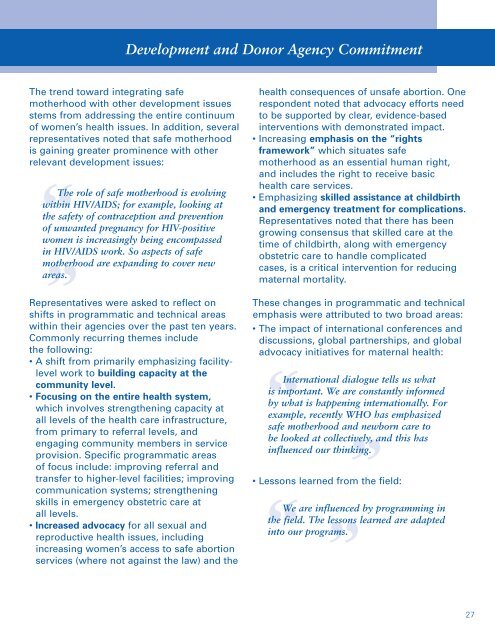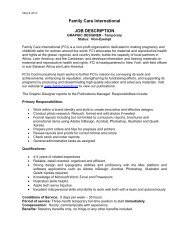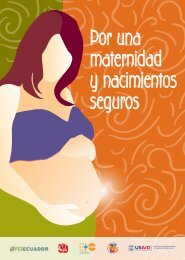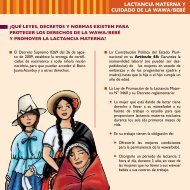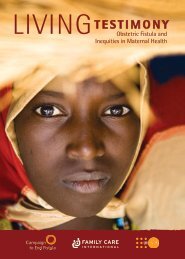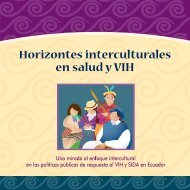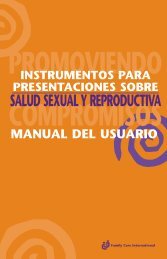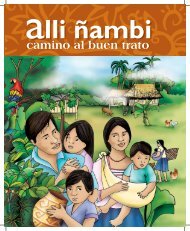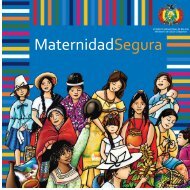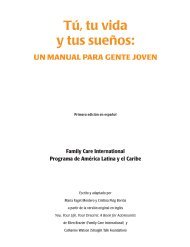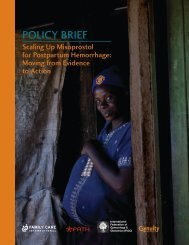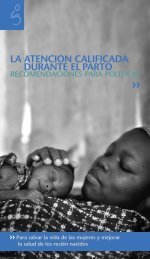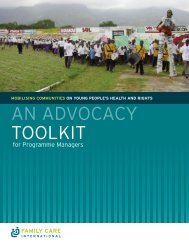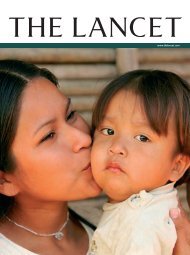Safe Motherhood: A Review - Family Care International
Safe Motherhood: A Review - Family Care International
Safe Motherhood: A Review - Family Care International
You also want an ePaper? Increase the reach of your titles
YUMPU automatically turns print PDFs into web optimized ePapers that Google loves.
Development and Donor Agency Commitment<br />
The trend toward integrating safe<br />
motherhood with other development issues<br />
stems from addressing the entire continuum<br />
of women’s health issues. In addition, several<br />
representatives noted that safe motherhood<br />
is gaining greater prominence with other<br />
relevant development issues:<br />
““<br />
The role<br />
of safe motherhood is evolving<br />
within HIV/AIDS; for example, looking at<br />
the safety of contraception and prevention<br />
of unwanted pregnancy for HIV-positive<br />
women is increasingly being encompassed<br />
in HIV/AIDS work. So aspects of safe<br />
motherhood are expanding to cover new<br />
areas.<br />
Representatives were asked to reflect on<br />
shifts in programmatic and technical areas<br />
within their agencies over the past ten years.<br />
Commonly recurring themes include<br />
the following:<br />
• A shift from primarily emphasizing facilitylevel<br />
work to building capacity at the<br />
community level.<br />
• Focusing on the entire health system,<br />
which involves strengthening capacity at<br />
all levels of the health care infrastructure,<br />
from primary to referral levels, and<br />
engaging community members in service<br />
provision. Specific programmatic areas<br />
of focus include: improving referral and<br />
transfer to higher-level facilities; improving<br />
communication systems; strengthening<br />
skills in emergency obstetric care at<br />
all levels.<br />
• Increased advocacy for all sexual and<br />
reproductive health issues, including<br />
increasing women’s access to safe abortion<br />
services (where not against the law) and the<br />
health consequences of unsafe abortion. One<br />
respondent noted that advocacy efforts need<br />
to be supported by clear, evidence-based<br />
interventions with demonstrated impact.<br />
• Increasing emphasis on the “rights<br />
framework” which situates safe<br />
motherhood as an essential human right,<br />
and includes the right to receive basic<br />
health care services.<br />
• Emphasizing skilled assistance at childbirth<br />
and emergency treatment for complications.<br />
Representatives noted that there has been<br />
growing consensus that skilled care at the<br />
time of childbirth, along with emergency<br />
obstetric care to handle complicated<br />
cases, is a critical intervention for reducing<br />
maternal mortality.<br />
These changes in programmatic and technical<br />
emphasis were attributed to two broad areas:<br />
• The impact of international conferences and<br />
discussions, global partnerships, and global<br />
advocacy initiatives for maternal health:<br />
““<br />
<strong>International</strong> dialogue tells<br />
us what<br />
is important. We are constantly informed<br />
by what is happening internationally. For<br />
example, recently WHO has emphasized<br />
safe motherhood and newborn care to<br />
be looked at collectively, and this has<br />
influenced our thinking.<br />
• Lessons learned from the field:<br />
are influenced by<br />
programming in<br />
the field. The lessons learned are adapted<br />
into our programs.<br />
“ “ We<br />
2


